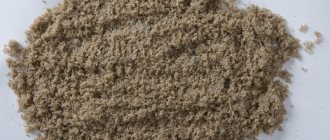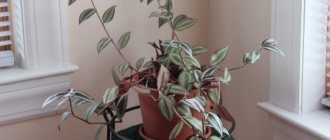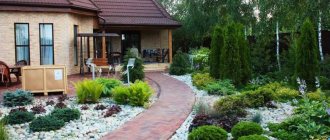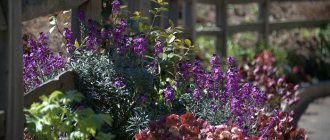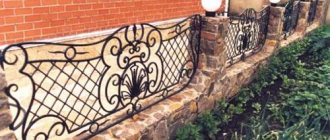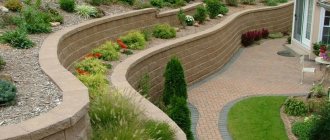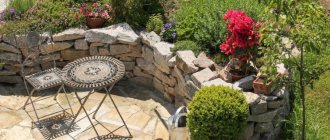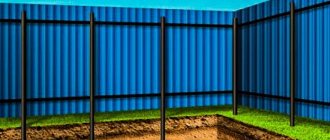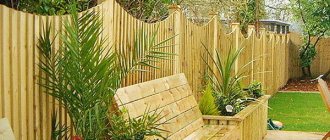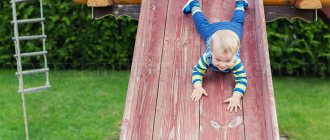Trees
Traditionally, summer residents combine business with pleasure. Therefore, they often plant fruit trees .
In this way, you can not only hide the unsightly appearance of the fence, but also get a harvest. Recently, more and more often you can see a row of Christmas trees planted along the fence. This is not an innovation, but a return to an ancient forgotten tradition. This is how noble estates were fenced. These trees visually transform the fence: it seems taller and more reliable. But to get the perfect result, you need to take care of the trees. Plants are planted at a distance of 30 cm from each other. As the Christmas trees grow, their branches and tops are trimmed, thereby adjusting the width and height.
A large number of ornamental trees have also been planted along the fence. Among them there are both coniferous and deciduous . If the size of the plot allows, then you can combine these types of trees. Deciduous trees are planted in the background, and low-growing conifers are placed in front of them. Low blue Christmas trees look especially impressive.
Shrubs
You can hide an unsightly fence with the help of bushes. Decorative varieties include lilac. It is unpretentious in care, able to please with beautiful flowering and a pleasant aroma.
Tumberg barberry will help decorate the fence. The shrub grows up to 90 cm and is shaped like a ball. In autumn, the leaves turn red with a yellow edge. Barberry does not need additional watering; it gets enough rain, but it is demanding on lighting. In addition, the plant does not like cold, so it is better to plant it on the south side of the site.
Spiraea is popular among summer residents . This is an unpretentious shrub. It attracts with its abundant flowering and high growth rate. The bush must be pruned in a timely manner so that the plant does not acquire an unkempt appearance. Today there are many varieties of spirea. They differ in the color of leaves and flowers. Read more in the article.
A favorite among dacha owners is derain. It grows quickly and the castings are painted silver with white edges. If you plant several bushes in the spring, then by autumn you can get a finished hedge up to 1 meter high. It is necessary to take into account that derain requires a lot of space, so combining it with other shrubs will not work.
Recent Entries
Chainsaw or electric saw - what to choose for the garden? 4 mistakes when growing tomatoes in pots that almost all housewives make Secrets of growing seedlings from the Japanese, who are very sensitive to the soil
Along the fence you can plant fruit bushes such as raspberries, currants, blackberries, and honeysuckle. While currants are fairly easy to care for, raspberries and blackberries can present certain difficulties. When planting blackberries, you must ensure that their branches do not touch the ground, otherwise they will sprout. Raspberries constantly have shoots on their roots. If it is not removed in time, then neat bushes will turn into impenetrable thickets.
Honeysuckle is very unpretentious and easy to care for. It has oblong blue berries that taste good. These are the earliest berries that you can try in the country. Honeysuckle branches heavily, so the branches should be trimmed periodically. But thanks to this quality, it can be made into an excellent hedge. The main thing is to give it shape using scissors.
Chokeberry is also well suited for planting in the country along the fence. In spring, delicate pinkish inflorescences look beautiful against the background of dark green leaves. In summer, rowan will delight you with a bountiful harvest of black, sweet-tart berries. In autumn, the plant will attract the eye with bright red foliage.
What to plant along the fence if it is in the shade?
When choosing seedlings for planting near the fence, consider the plants' preferences for light and shade. It is better to place flowers with delicate leaves, as well as shade-loving crops, in the shade of the fence.
Coniferous trees can be planted in the shade: yew and fir. These plants are tall, but can be easily trimmed to adjust the crown shape and height after planting and decorate the area.
Yew
Hydrangea and elderberry seedlings in a flower garden, if planted in the shade, do not require loosening. Therefore, you can plant them in the far corners of the site near the fence.
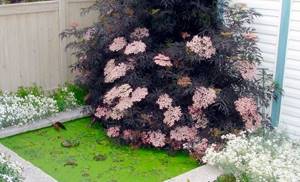
Elder
You can also plant seedlings with red rowan berries and lilac bushes in a flower garden in the shade near a private fence.
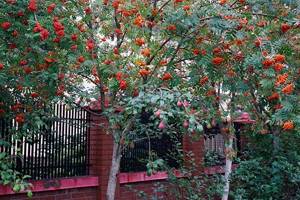
Rowan
It’s clear what trees and bushes to plant in the flower garden near the fence. All that remains is to decide on the plants. Proper planting and care in the future will allow you to decorate the fence with the help of different plants and make the site attractive in any season.
Source
Lianas
Often the fence is made from chain-link mesh .
The disadvantage of this fence is that it does not hide it from the eyes of neighbors at all. Climbing plants can correct this situation. Maiden grapes are easy to care for, grow quickly, and are easy to harvest. The mad cucumber has the same properties. You can often see hops growing along the fence. However, this plant is not recommended for planting due to its tenacity. Its shoots grow quickly and are very difficult to remove. Edible actinidia, beans and Jerusalem artichokes will not only fulfill a decorative role, but will also delight you with the harvest. These plants are quite unpretentious, with the exception of Jerusalem artichoke. It needs warmth, light, fertilizing and watering.
Features of caring for plantings along the fence
The choice of plantings when assessing the characteristics of care also depends on the wishes of the owner. It’s one thing if a perennial plant planted near a fence does not need regular care and is content with natural precipitation and nutrition, and quite another if it does not develop without the gardener’s attention. Do you need beautiful plantings near the fence that take a lot of time to maintain, or is it quite possible to get by with plants “without whims?” The optimal solution is chosen by the owner of the site himself.
Tandem of fencing and plants planted along the fence: what to plant near a fence made of different materials
Without taking into account the features of the constructed fence, what it is made of, how tall and powerful the structure is, it is impossible to decorate or hide it aesthetically correctly. The most common material for fencing summer cottages, gardens and vegetable gardens is chain-link mesh. Through such a fence, well-groomed beds and fragrant flower beds are clearly visible. Many gardeners are proud of their plot, and do not hide their desire to show off in front of their neighbors.
If you want to hide the dacha from prying eyes, plant climbing perennials, ivy, wild grapes, hops, and all types of beans near the chain-link fence. These plants will decorate the fence, but it is almost impossible to remove them from the ground - from year to year a new shoot will sprout at the planting site.
When planting plants near a chain-link mesh, it is necessary to take into account that under the weight of the vines of a climbing plant, the wire fence can bend and sag, and this will render the fence unusable, and after some time the fence will need to be replaced.
Shrub elderberry and hawthorn, liana-like grapes and hops, woody cherry and plum trees, and all types of conifers feel great near a regular wooden fence. The question is different: is a wooden fence with an elderberry growing nearby needed to enclose a country cottage, or is it necessary for a dacha to be woven from top to bottom with branches of wild grapes that cannot be eradicated.
A fence using corrugated sheets and corrugated sheets is considered a more popular and richer structure. Indeed, such a fence is more durable and beautiful, but very harmful to plants. When exposed to sunlight, the material heats up very quickly and plants planted near the fence simply “burn.” Painting the surface will slightly soften the heat generation.
Mostly trees and shrubs, jasmine, lilacs, and raspberries are planted near the corrugated fence. It must be remembered that plants, regardless of choice, should not be planted very close to the fence, but watered more often than usual.
No less popular among summer residents are hedges, which over time turn into a solid green wall. Such fences require increased attention and maintenance skills, as they require constant adjustment of appearance, cutting and shaping, and removal of overgrowth. Hedges made of coniferous plants are beautiful - all types of thuja, spruce, and pine. The colorful bushes of fragrant lilac and jasmine are magnificent during the flowering period. Flowering barberries and currants are healthy and fragrant.
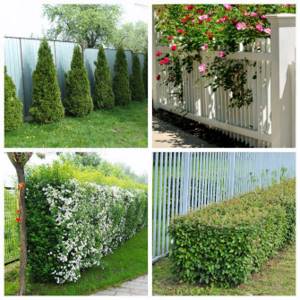
Flowers
If the country fence looks good, then it is worth emphasizing its advantages by planting flowers nearby. You can create one or more interesting flower beds that will attract attention to both the plants and the fence. Flowers are arranged in the flower bed depending on their height. The shorter ones are planted in the foreground. Plants that are taller are placed behind them.
Flowerbeds that contain flowers with different flowering periods look especially beautiful. As some plants fade, others bloom. As a result, you can achieve the effect of constant flowering from early spring to late autumn. Caring for such a flower bed is quite difficult. Most often, it contains annual flowers, which are planted in the spring and harvested in the fall. Even if you place perennials, caring for them will also require a lot of effort and time.
Using flowering perennials to transform the area along the fence
The most popular flowering perennial is the climbing rose. The ivy remains evergreen and lush on the fence. The spans of dacha fences braided with shoots of wild grapes in winter, brown and unattractive, promise the presence of a huge mass of beautiful greenery from spring until late autumn. Rudbeckia and colorful mallows, dahlias and peonies, spring tulips and daffodils look beautiful.
The characteristics of perennials, namely flowering in different periods from spring to autumn, make it possible to create an ever-green and constantly blooming hedge. In place of the faded plant, a new one appears, with different foliage and buds, and begins to bloom.
Mixborders
Landscape design, like any area of life, has its own fashion trends. In recent years, mixborders have become popular .
They involve planting different types of plants in one place. Juniper or thuja are most often placed in the background. Dwarf trees and low-growing shrubs may also be present. Perennial flowers are brought to the foreground. Plants are selected that have bright colors. These can be rich green leaves and bright flowers. In general, the more bright colors and colored spots, the better. To design a mixborder, plants that bloom at different times of the year are selected. The result should be a smooth transition from one flowering to another. Dry shoots and flowers must be removed, and shrubs should be kept in a neat, well-groomed appearance. It should be noted that this type of landscaping focuses attention on the fence, so special attention should be paid to the fence even before the start of the formation of the mixborder.
